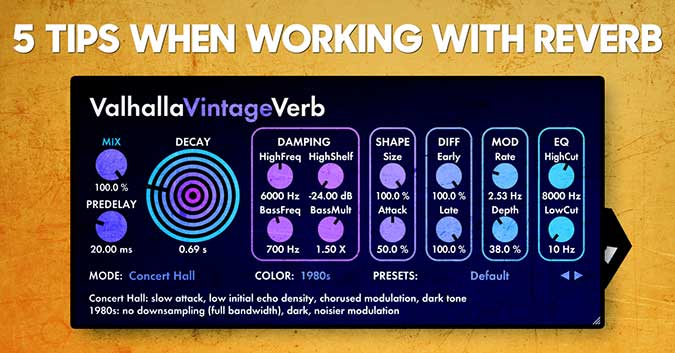#AudiotentTip 98. 5 Tips When Working With Reverb.
Here are 5 of our favourite techniques to use when working with reverbs.
This is a starting example. Completely dry synth sound that contains a fair amount of low end.
1. Cut the lowest frequencies from the reverb signal. They are usually unnecessary unless you are aiming for a specific effect. Good starting point would be somewhere around 60-100 HZ. Tweak it till it sounds right for your sound. Sub frequencies should stay dry and unaffected, without any overlapping from the reverb.
To achieve this, we inserted an equalizer on our reverb send channel. However, many of the reverb plugins have an in-built high pass filter control as a quick alternative.
2. Add a short ambience. Using a lot of medium or long reverb spaces might lead to a cloudy mix. Sometimes it’s best to just add a very short 0.2 – 0.4s decay length ambience. The result will be a livelier, more ‘3d’ sound space.
3. Pre-delay the reverb. This technique allows you to delay the reverb signal by a set amount of time, giving the dry transients room to cut through the mix. Either use an internal pre-delay (given your plugin has this functionality), or alternatively, insert a delay plugin just before your reverb (on a reverb bus channel).
Adding a pre-delay made the transients cut through, at the same time, detaching the reverb further away from the source.
4. Modulate the reverb. It’s a technique that could make the high frequencies sound less metallic. On the other hand, if modulation is pushed to the limit, reverb becomes an interesting chorusy texture on it’s own.
5. Make the reverb mono. Having a reverb in mono sounds as if it becomes an extension of the source signal, rather then the usual wide special effect. It’s great for leaving lot’s of room in your mix for other wider elements. Making the sound very focused.




Leave a comment
This site is protected by hCaptcha and the hCaptcha Privacy Policy and Terms of Service apply.